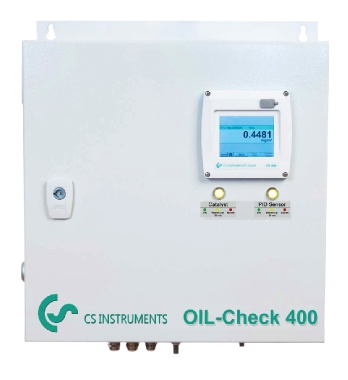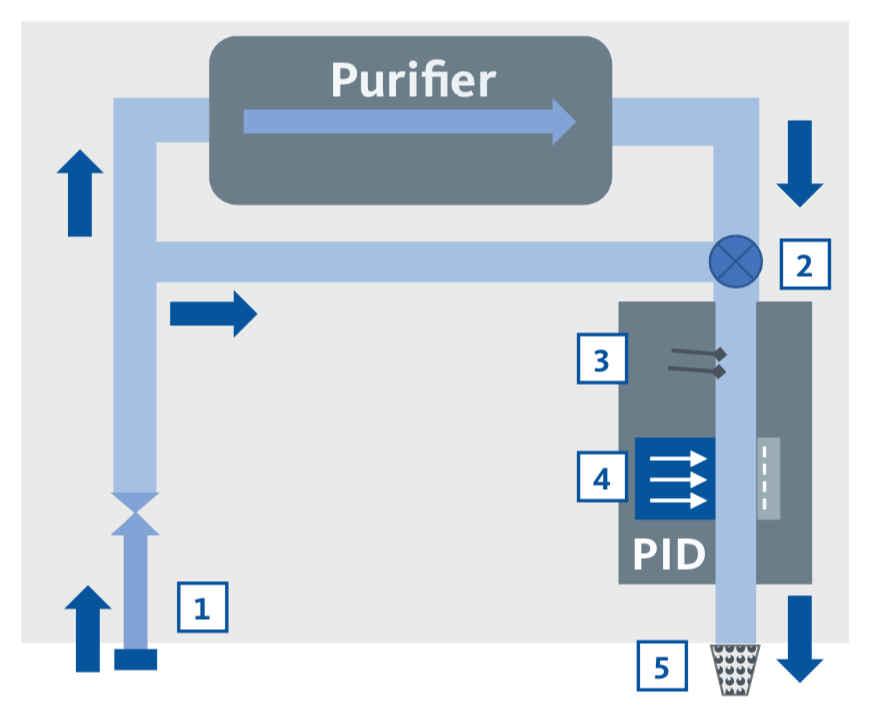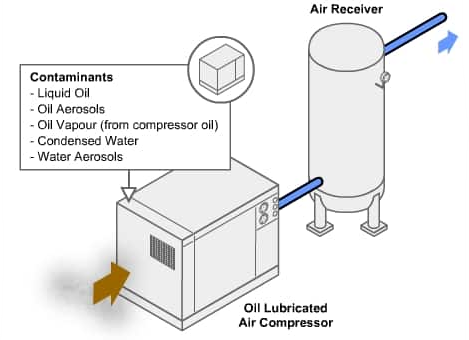


Continuous Oil Vapor Measurement in CDA
Compressed air contaminated with oil is a danger for production systems, the environment and also health. Since oil contamination can occur at any point in compressed air processing, the risk should not be underestimated, especially in sensitive production areas of the electronics, chemical, pharmaceutical, food and beverage industries.
The OILCHECK 400 monitoring system continuously controls the compressed air accurately and according to applicable standards for the residual oil vapour concentration and supports you for retaining the compressed air quality. You can therefore fulfil the required standards and gain the trust of your customers with responsible practices.
| Medium | Compressed air free of aggressive, corrosive, caustic, toxic, flammable and combustion supporting materials or substances. The use of a compressed air preparation adapted to the measurement task is necessary. |
| Detectable substances | Polyalphaolefines, aromatics, hydrocarbons, aliphatic hydrocarbons and functional hydrocarbons |
| Application | Downstream of activated carbon filter and activated carbon adsorber Downstream of oil-free compressed air after air dryer Point of use at production machines |
| Measured value | Residual oil content in mg of oil/normal m3, relative to 1.0 bar, +20°C, 0% relative humidity, according to ISO 8573-1 |
| Sensor Technology | PID (Photo-Ionization Detector) |
| Measuring range | <0.001 - 2.500 mg/m3 |
| Updating the measuring value display | Every 4 seconds |
| Measuring gas humidity | ≤ 40 % relative humidity, PDP maximum +10°C non-condensing humidity |
| Ambient working temperature | +5°C ... +45°C, relative humidity ≤ 75% without dew point |
| Measuring gas temperature | +5°C ... +50°C |
| Operating overpressure | 3 ... 16 bar(g) |
| Sampling air connection | 6mm tubing |
| Measuring gas humidity | ≤ 40% relative humidity, max. pressure dew point +10°C, non-condensing humidity |
| Compressed air connection | G 1/8” female thread according to ISO 228-1 |
| Application for measuring probe | Optional application |
| Measuring gas flow rate | Approx. 1.20 Standard litre / minute relative to 1.0 bar absolute and +20°C, in depressurised status |
| Display for adhering to an ISO residual oil vapour class | as LED (red/green) |
| Reference gas generation | Integrated catalytic converter |
| Power supply | 100-240 VAC / 1Ph. / PE / 50-60 Hz / ± 10% |
| Protection class | IP54 / DIN EN 60529 |
| Outputs / Interface | 4 ... 20 mA analogue output Optional: RS-485, MODBUS RTU |
| Dimensions | 410 x 462 x 163 mm (W x H x D) |
| Weight | approx. 16.3 kg |

The reduced compressed air via a pressure reducer 1 to the working pressure of the OILCHECK 400 is divided into two partial flows. One part flows directly in the direction of the measuring cell. The other part flows into the heated purifier in which all hydrocarbons are subjected to a catalytic cracking process which converts into water (H2O) and carbon dioxide (CO2).
The air which is now purified of hydrocarbons is now available as the zero-air or reference air for the measuring cell 3. The measuring chamber is therefore cleaned from possible, adhering hydrocarbons and the PID measures the zero-air as constant reference value. The valve 2 enables both partial flows to enter the measuring chamber alternatively. Sensors monitor the pressure and temperature here 3. The highly-sensitive photo-ionisation detector (PID) 4 subsequently evaluates the respective oil vapour content. The measured air subsequently exits the measuring chamber via a nozzle with a silencer 5 into the ambient air. The compressed air through flow via the purifier and the measuring chamber is 1...2 standard litre (1 bar, 20 °C).

Oil – Atmospheric air typically contains between 0.05 mg/m3 and 0.5mg/m3 of oil vapor. Common sources are vehicle or motor exhaust and industrial processes. Even when basically oil-free compressed air is generated, oil can get into the compressed air system.
Possible sources of contamination are:
Oil can occur in the compressed air system not only in liquid form but also as aerosol or in an even finer form as oil vapour. For this reason, OILCHECK is the safeguard solutions to keep monitor residual oil content in compressed air permanently for demanding applications.